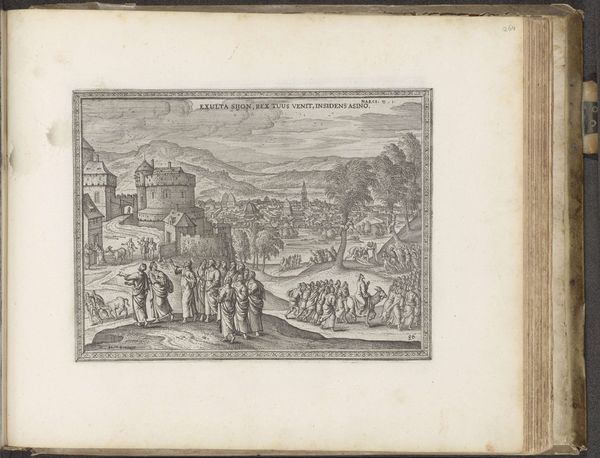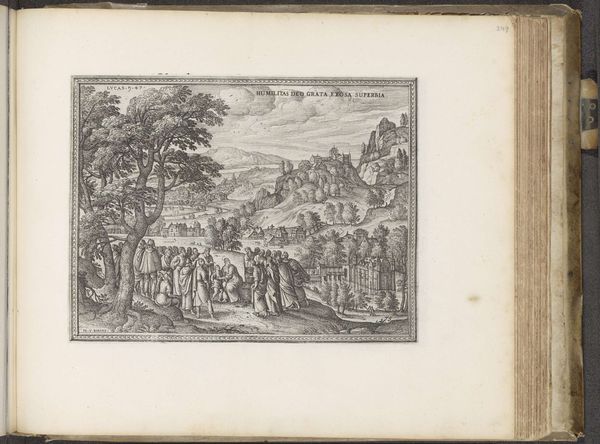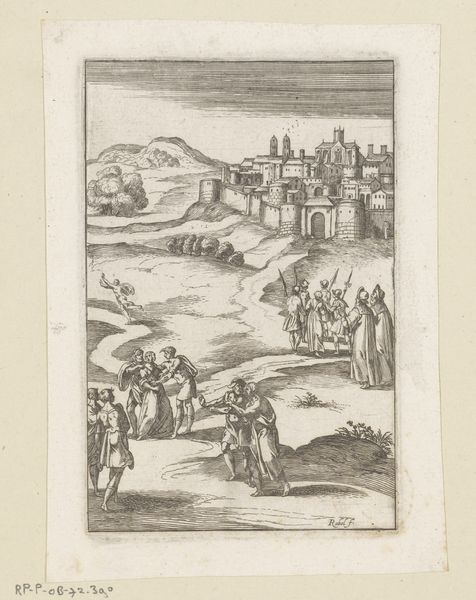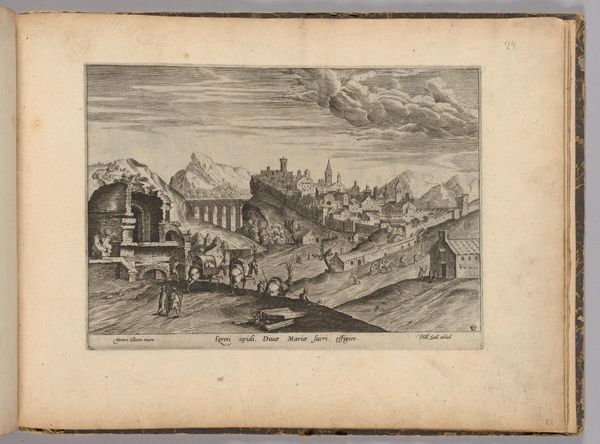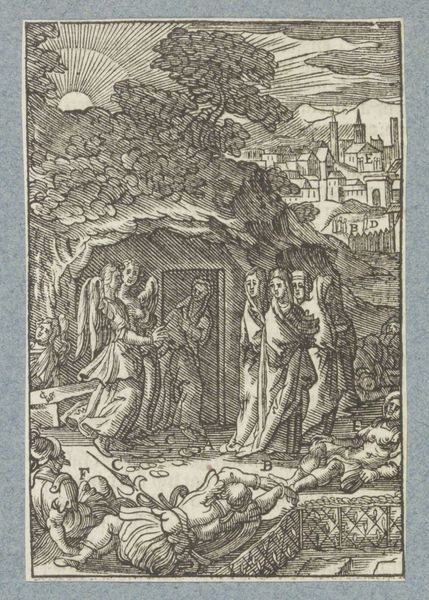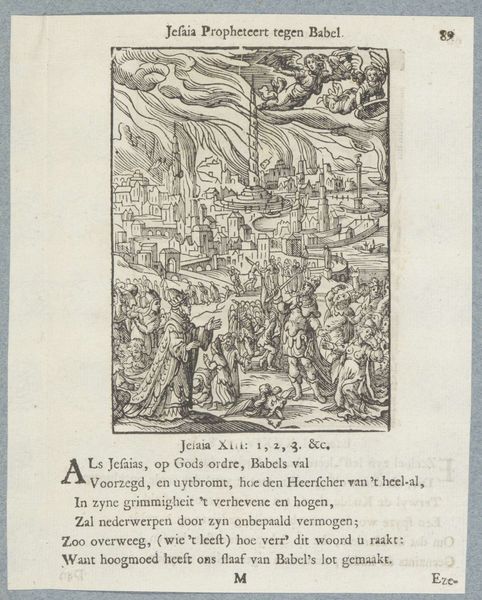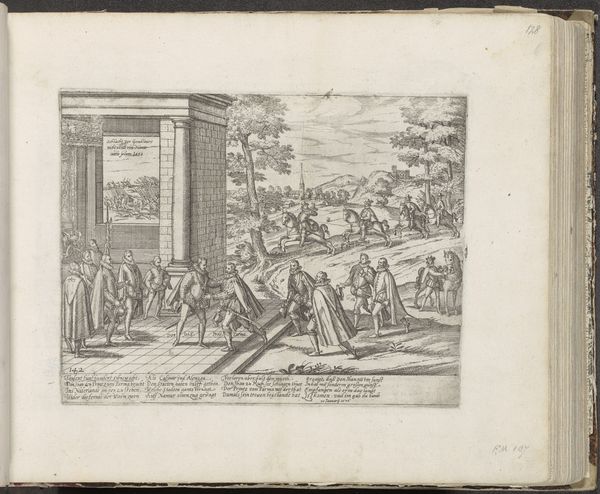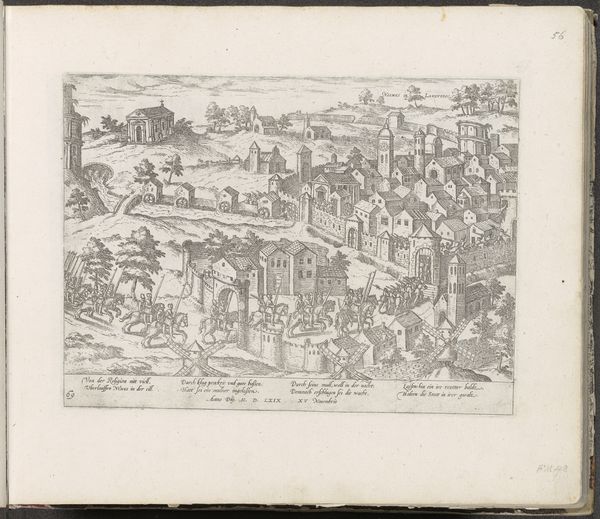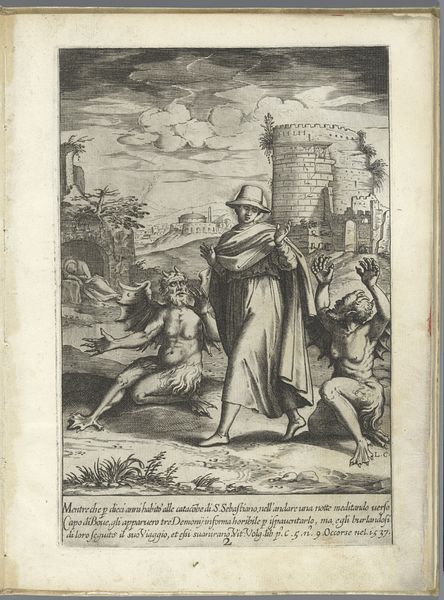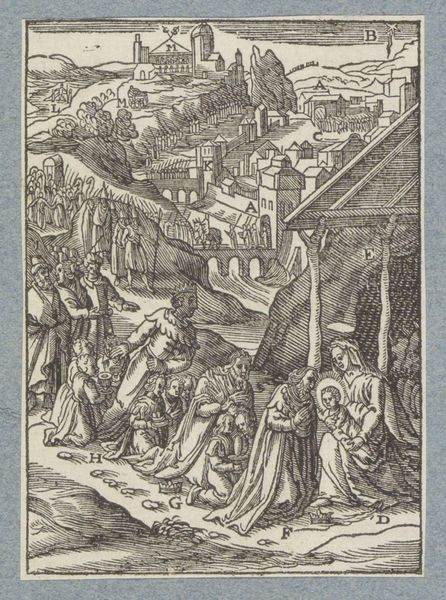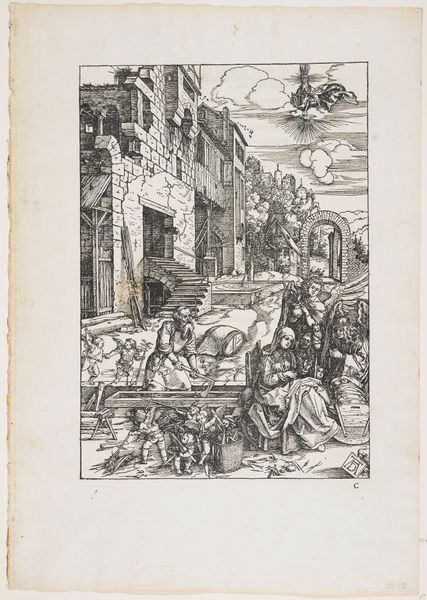
Adnotationes et Meditationes in Evangelia... 1595
0:00
0:00
drawing, print, engraving
#
drawing
# print
#
book
#
figuration
#
line
#
history-painting
#
northern-renaissance
#
engraving
Dimensions: 13 3/4 × 9 15/16 × 3 3/16 in. (34.9 × 25.3 × 8.1 cm)
Copyright: Public Domain
Curator: This is an engraving from a book titled *Adnotationes et Meditationes in Evangelia...*, dating back to 1595 and made by Hieronymus Natalis. Currently, it's part of the Metropolitan Museum of Art's collection. Editor: My first thought? The scene is so meticulously rendered, almost overwhelmingly so. You can almost feel the weight of tradition and ritual etched into the lines. Curator: Precisely. Natalis's work highlights the dissemination of religious iconography through printmaking during the Northern Renaissance. These engravings were incredibly accessible; far more so than paintings. Editor: You can see the emphasis on line—it defines form, texture, everything. But considering the reproductive nature of engravings, was Natalis more artisan than artist? Where does creativity meet craftsmanship here? Curator: A valid question. The process was paramount, involving collaboration. Natalis, as a figure, approved designs and brought different specialists together. And consider its function— this image serves not just as decoration, but as an educational tool, shaping perceptions of biblical narratives within specific socio-political contexts of the period. Editor: Right. And the composition, with Bethlehem almost a character in itself looming over the Holy Family. It seems to illustrate more than a single moment—the magi's journey is as vital as the adoration. Curator: Absolutely. The print demonstrates the pervasive influence of religious institutions on artistic production and distribution at the time. Dissemination on a large scale was intended to support the aims of the institution itself. Editor: Looking at the medium informs our understanding. These small prints encouraged intimate, personal readings of faith at the time. How the everyday worshiper accessed and internalized these widely available images offers valuable insights into the period. Curator: By examining the image through its materiality and function, we grasp its power to reinforce societal structures while allowing individuals access and opportunity for personalized interpretations. Editor: It makes you realize that viewing this in a museum now is a vastly different experience from what Natalis originally intended. Thanks for a closer understanding.
Comments
No comments
Be the first to comment and join the conversation on the ultimate creative platform.

